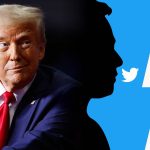CES The Consumer Technology Association has issued some fresh predictions about how much Americans could be paying for their hardware if Donald Trump’s wallet-busting import tariffs are enacted.
The US-based association’s latest study looks at two scenarios that have been floated by the incoming president: If Trump enacts a global 10 percent import tariff and imposes an additional 60 percent for China; and if he raises global import tariffs to 20 percent with an additional 100 percent for China.
This comes after the CTA, which organizes the annual CES mega-conferences and represents the United States’ $400 billion-odd personal and home tech industry, earlier suggested Trump’s import tariffs would result in prices for laptops and tablets rising by as much as 46 percent in America.
Tariffs are a tax on American businesses and consumers
Referring to ten product categories – laptops, smartphones, connected devices, video game consoles, computer accessories, monitors, desktop computers, televisions, lithium-ion batteries, and speakers and headphones – “even accounting for alternative sources of supply and potential new US production, the proposed tariffs on these ten products alone would reduce American consumers’ spending power by $90 billion to $143 billion a year,” the report claimed.
“Price increases would be substantial if suppliers pass all the higher costs through to final consumers. Buyers of laptops, tablets and smartphones would feel the greatest impact.”
In the first scenario, the CTA predicted the price of laptops and tablets would rise 45 percent for American buyers; games consoles would rise 40 percent, monitors would cost 31 percent more; and smartphone prices would rise 26 percent.
But if Trump enacted the harsher tariff regime, laptops and tablets prices would soar by 68 percent, consoles would see price increases of 58 percent, monitors would cost 48 percent more, and smartphones would be 40 percent more expensive, it is claimed.
“The tech sector is America’s economic engine, driving global innovation and job creation,” said CTA CEO Gary Shapiro. “Proposed tariffs threaten the deflationary power of tech in the global economy. Tariffs are a tax on American businesses and consumers. We urge the incoming administration and Congress to prioritize an Innovation Agenda that fosters growth.”
Trump’s argument is that slapping more tariffs on electronics that are made in China and imported into the United States will force manufacturers to onshore their factories, back to the US, and build products domestically. The report doubts this will ever happen, and instead, manufacturing will simply shift from China to other countries that are cheaper to operate in than the US, and have lower tariffs, which is in line with earlier research on the topic.
Even if manufacturing did come back to America, the industry would still be dependent on Chinese component suppliers. The Middle Kingdom has invested to lead certain key sectors, such as lithium-ion battery production, low-spec processors, and high-volume parts for consumer electronics.
Tech titans hide in shadows awaiting Trump tariff threats
Trump tariffs transform into bigger threats for Mexico, Canada than China
If Trump gets elected, get your tech buying done asap
There’s also the question of retaliatory tariffs being levied against American exporters, since the rest of the world is also likely to raise barriers of their own against the US. Canada, amid continuous trolling by Trump as well as threats of tariffs and more, is said to be drawing up a list of retaliatory levies. And last year, the Mexican government warned that Trump’s tariffs could result in the loss of 400,000 US jobs and and raise the average price of some vehicles, such as pickup trucks, by $3,000 or more apiece.
Some in the technology world have been urging Trump to spare their industry, and the president-elect was reportedly going to soften his stance on the issue. However, on Monday, Trump denied this was the case.
“The story in the Washington Post, quoting so-called anonymous sources, which don’t exist, incorrectly states that my tariff policy will be pared back,” he said on Truth Social. “That is wrong. The Washington Post knows it’s wrong. It’s just another example of Fake News.”
Trump has proposed, for one thing, offsetting people’s federal income tax bills with tariff revenue, which is a whole new kettle of fish: Prices still likely rise for everyone, but folks who file their taxes may pay less, depending on how it’s all calculated. ®





GIPHY App Key not set. Please check settings